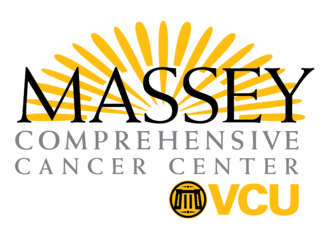Exciting laboratory discoveries

- Devanand Sarkar, Ph.D., Paul B. Fisher, M.Ph., Ph.D., and colleagues identified a novel mechanism in gene regulation that contributes to the development of a form of liver cancer called hepatocellular carcinoma. Currently, there is virtually no effective treatment for HCC, and this breakthrough identifies a promising new target for therapeutic intervention. Published in the journal Hepatology, the study describes for the first time how RNA-induced silencing complex (RISC) contributes to the development of liver cancer.
- Steven Grant, M.D., Paul Dent, Ph.D., and colleagues developed a promising treatment strategy for multiple myeloma that pairs two targeted agents to kill cancer cells. The study’s findings, published in the journal Blood, are the first to demonstrate the synergistic, anti-myeloma effects of this combination regimen both in vitro and in vivo.
- Paul Dent, Ph.D., and Paul B. Fisher, M.Ph., Ph.D., developed a novel virus-based gene therapy for renal cell carcinoma that has been shown to kill cancer cells not only at the primary tumor site but also in distant tumors not directly infected by the virus. Renal cell carcinoma is the most common form of kidney cancer in adults and currently there is no effective treatment for the disease once it has spread outside of the kidney. Their findings were reported in the journal Cancer Biology & Therapy.
- Scientists may be a step closer to improving the detection of metastatic tumors in an organism — in real time — using a noninvasive approach that pairs an imaging agent with a genetic element that only expresses itself when it is in cancer cells. The work, a collaborative effort between Massey researcher Paul B. Fisher, M.P.H., Ph.D., and Johns Hopkins University, could lead to improved and earlier detection of tumors and metastases in patients and allow clinicians to monitor the cancer’s response to therapy. The research builds upon a genetic element previously discovered and characterized by Fisher.
- Steven Grant, M.D., and a team of researchers have uncovered the mechanism by which leukemia cells trigger a protective response when exposed to a class of cancer-killing agents known as histone deacetylase inhibitors. The findings, published in the Journal of Biological Chemistry, could lead to more effective treatments in patients with leukemia and other cancers of the blood.
- Sarah Spiegel, Ph.D., and her research team made an important discovery that could lead to a new generation of cancer-fighting drugs. Published in Science, the study discovered the cell nucleus contains and produces S1P, a lipid mediator that plays a role in regulating cell growth or death in certain genes.
- William Barton, Ph.D., reported the discovery of a new role for a receptor long known to be involved in tumor growth. His findings could lead to improved drug treatments for solid tumor cancers.
Innovative clinical advances
Massey’s innovative clinical trials are advancing promising discoveries found in our laboratories and bringing them bedside to patients. They are also uncovering better ways to prevent and control cancer. A few examples:
- While at Massey, former physician Mitchell Anscher, M.D., led a study to assess the safety and effectiveness of a new device to assist in the effective radiation treatment of prostate cancer. Determined safe and effective, the device, a small biodegradable balloon developed by BioProtect Ltd., is placed between the prostate and rectum in order to better position the prostate for radiation.
- Former Massey physician Thomas J. Smith, M.D., led a Phase II study while at Massey testing an FDA-approved device for pain management for patients undergoing chemotherapy treatment. The Calmare pain therapy device, which utilizes biophysical “scrambler” technology through application of surface electrodes to the skin, proved to be an effective treatment for chemotherapy-induced peripheral neuropathy.
- Michael Chang, M.D., opened a trial studying hypofractionated intensity modulated external beam therapy for prostate cancer.
- Amir Toor, M.D., opened a Phase I trial testing a new combination of drugs for adaptive immunotherapy to treat multiple myeloma in the setting of stem cell transplantation.
- Steven Grant, M.D., received a $1.2 million “Grand Opportunities” grant from NCI to partially fund a Phase I clinical trial for patients with acute forms of leukemia. The study will use two novel targeted agents, belinostat and bortezomib, in combination.
- Grant also received a two-year, $539,000 grant from NCI to support a clinical trial for patients with refractory chronic lymphocytic leukemia. The trial is based on preclinical studies by Grant and his collaborators that demonstrated the potential of combining two agents to induce programmed cell death.
- John M Quillin, Ph.D., M.P.H, and colleagues found that most terminally ill cancer patients who were eligible for genetic testing never received it despite the fact that it could potentially save a relative’s life. The study was recently published in the Journal of Genetic Counseling and is the first to document the prevalence of hereditary cancer risk and the need for genetic services and patient education among terminally ill cancer patients.
